in-conversation
In Conversation With Makasi Studios
by Debbie Misati
May 23, 2024
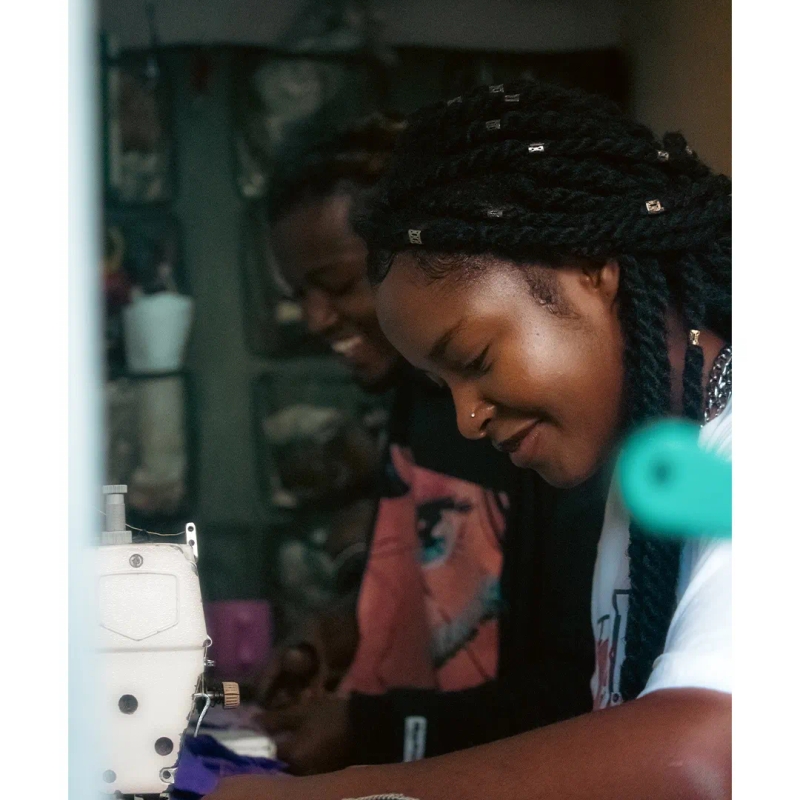
in-conversation
May 23, 2024

Makasi studios is a group of three young talented fashion designers based in Nairobi, working from their studio in Ngara, who specialize in upcycled fashion. Each designer has their own style and way of working with garments, but it’s clear that working together enables them to support each other in the advancement of their craft
Can you tell us about your journey in the fashion industry and what inspired you to become fashion designers?
Vart: Where do I even start? When I was younger I used to see my friends and classmates wear fly fits, but my mom wasn’t keen on buying me fly fits, and that’s just because of her taste & sense of fashion not aligning with what I found cool *laughs*. So in high school I began thrifting in places like Gikomba. I then happened to meet Luca Rindi and as fashion enthusiasts we started working together on styling. From styling grew my passion for making garments. Most times I just wanted to customize my own pieces to give my fits some flavor. I got my first sewing machine right after and the rest is history!
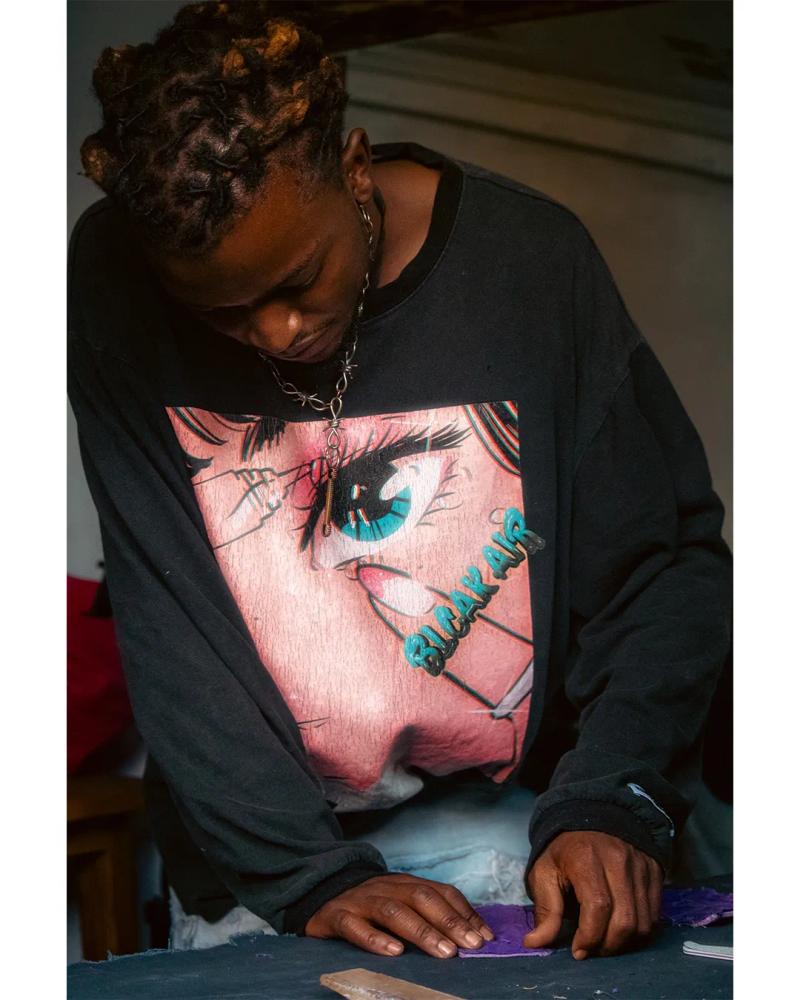
Mokaya: I started really young by making clothes for my dolls using fabric scraps and even bedcovers, so from then I already had a great interest in fashion. I also used to admire the outfits of a specific girl from our estate at that time and I always wanted to be as fashionable. In university I begun upcycling my own wardrobe, and my first machine was a gift from my mother in law, and that really helped me get into bringing my own designs to life
Troy: My earliest memory was when I was in primary school going for Saturday tuition in home clothing, and I didn’t have shoes, so I decided not to go and also not to tell my parents, but surprisingly my dad brought me a new pair of shoes and I was more excited about how to style them at school than going to the tuition itself. After that, when I joined high school I would be the student who helped others alter their school pants, if you’re familiar with piping school pants then you get it, so there I perfected my hand sewing skills. Right after I applied to participate in a fashion designers show and I got in, but since I wasn’t good at using the machine I got a tailor who completely ruined all the designs, and I vowed to learn how to make the clothes myself which I do right now.
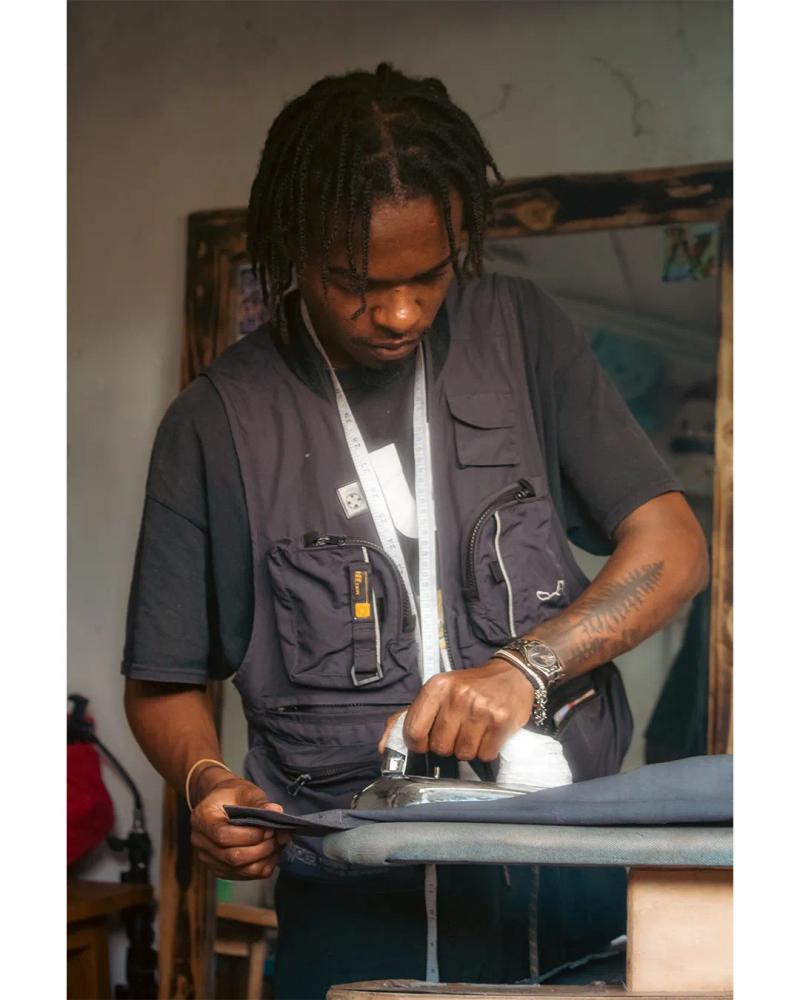
Can you explain the concept of upcycling and why you preferred it compared to making clothes from scratch?
Troy: First things first, upcycling increases the lifecycle and longevity of garments, and this leads to a reduction in the carbon footprint. And as an artist who is anti-capitalist, buying a roll of material to make new clothes isn’t financially feasible.
What are some of the challenges that you guys face when working with upcycled materials?
Mokaya: I would say one major issue we come across, especially while thrifting for pieces to upcycle, is stained garments. Another challenge is you will hardly ever find the same fabric or cloth piece twice, whether in terms of color, texture or material. You’ll find a gem and it will hurt knowing you can only do a limited amount of deconstruction and upcycling with it.
Vart: Another challenge we often face is interested and potential clients not understanding our pricing. Because as the designer, you’ll even spend up to days trying to find materials that suit client expectations. So translating the labor used into the final costs of production is important, and some clients don’t see it that way. They think we’re upcharging for simple gikomba thrifts, and that’s not the case. I mean it’s getting better now, but not many people see the value in the labor that needs to be put into this.
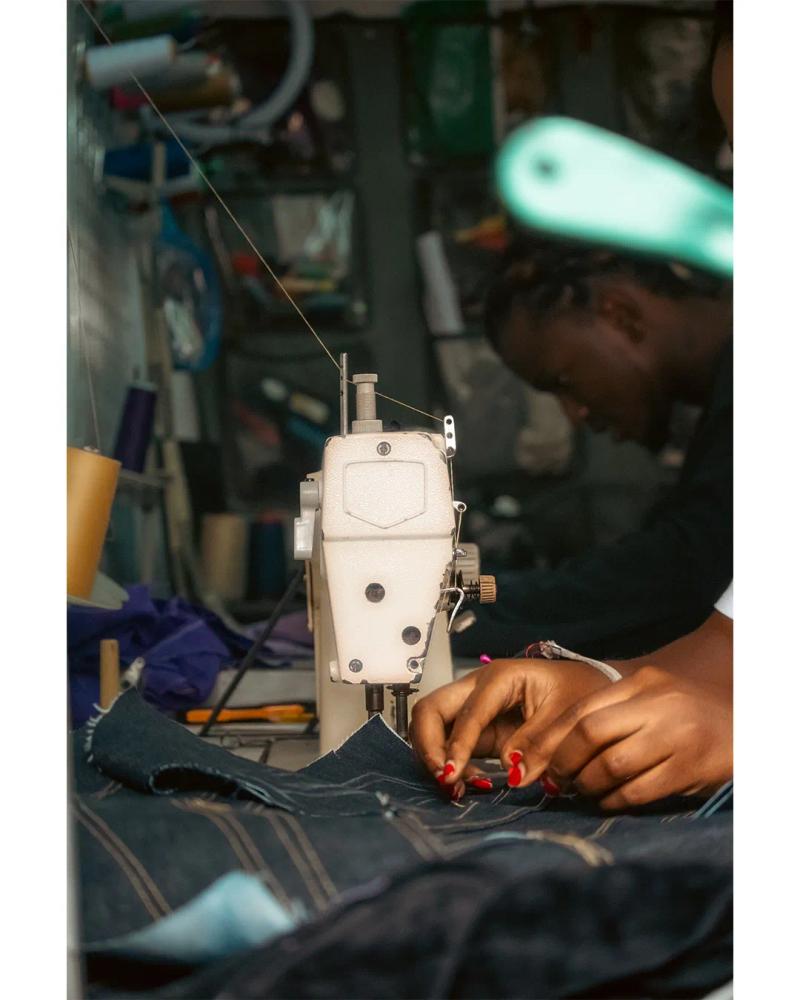
What do you hope people feel or experience when they wear your designs?
Vart : I’m a STAR!
Mokaya : Confidence!
Troy : Not mediocre but outstanding!
Can you explain your brand’s approach to reducing waste during the manufacturing process?
Vart: So this is my strategy: when a client wants for example a pair of pants I buy two, and after using some bits I keep what’s left and turn it into a completely different product from my own design that I later sell.
Mokaya: I cut my fabric into patterns that ensure minimal fabric misuse.
Tony: During sourcing, we don’t shy away from picking items that show signs of wear and tear. We use the better cuts and discard what can’t be used at all but we try our best to use that material your regular tailor would dispose of as trash.
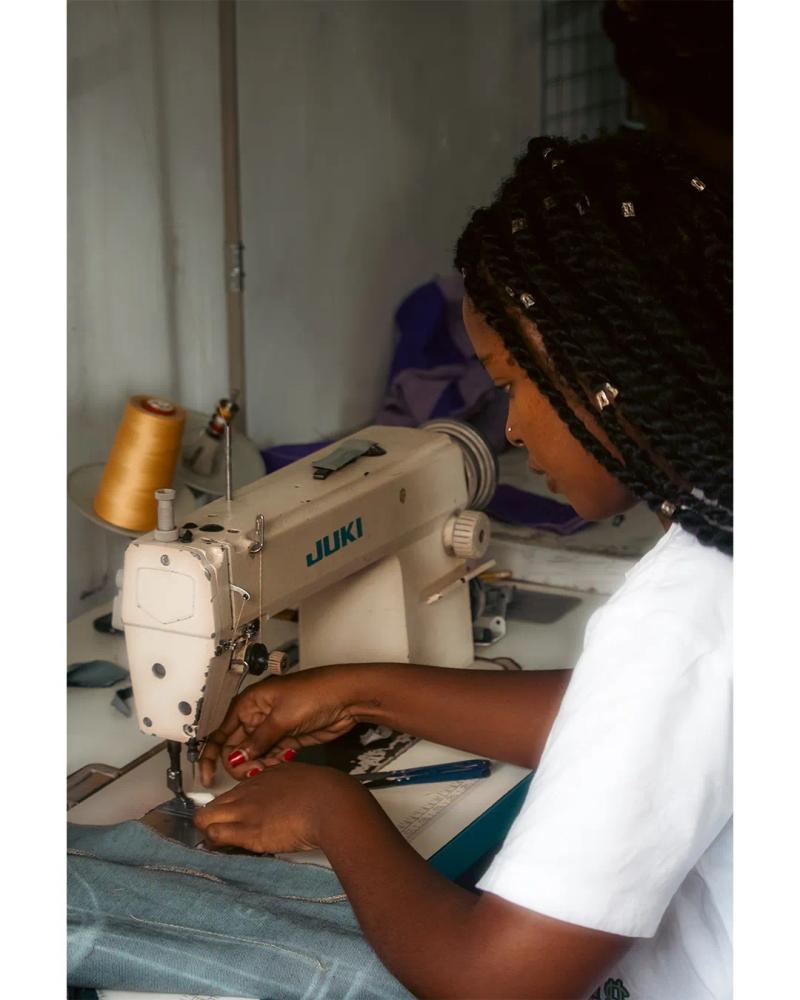
What are the perks of working together as a team of three people compared to working alone?
Vart: When I started out by myself it was lonely, but now when I’m at the workshop with others I even feel motivated when I see another person design a piece and it looks good. They also help me out in being confident in my own work.
Mokaya: The most important thing to me is community, and like Vart said, you get motivated working around your peers so that’s a good thing. When I used to work by myself I would procrastinate and get tired easily, but now there’s a sense of healthy competition as well.
Troy: Working together definitely gets the creative juices flowing because I can pitch my ideas to them and get a second opinion from them helps a lot because we all have our strengths
What do you consider the most important skill in a designer?
Mokaya: Confidence.
Vart: Imagination.
Troy: Being free minded and able to take criticism.
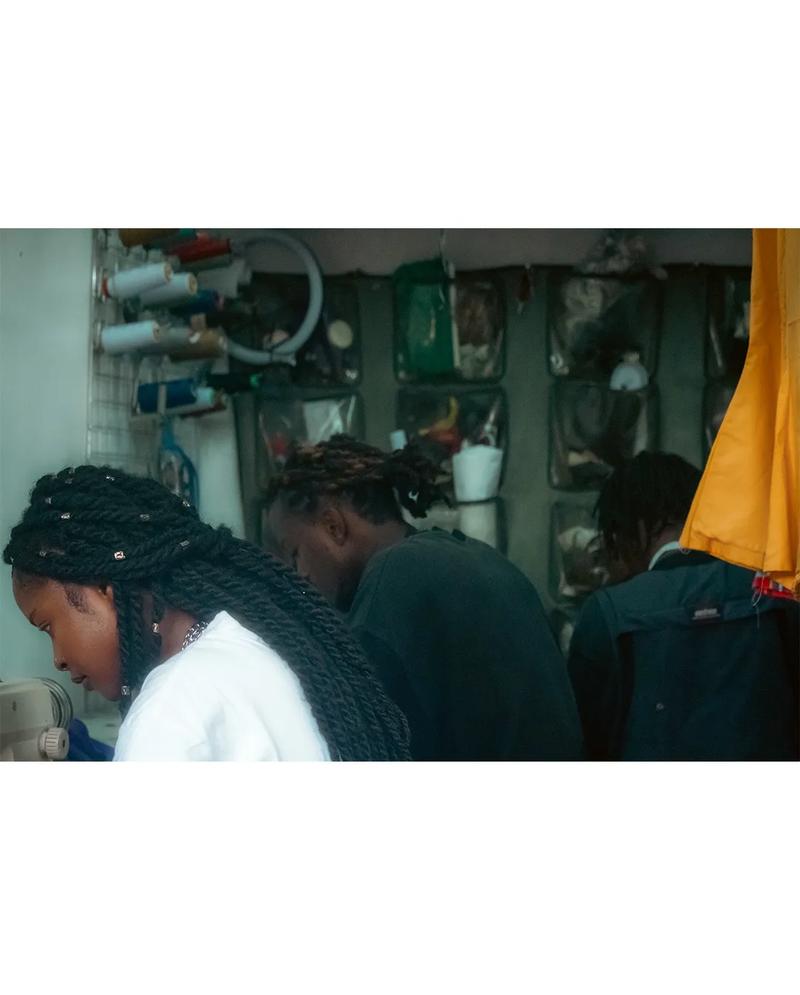
What are your thoughts on the current state of the Kenyan Fashion scene?
Mokaya: Well I think the fashion scene is very exciting. I feel like brands are really out here doing their thing. Brands like Akiba studios and Metamorphosized, and I’m so happy and excited to be in this space. I love the experimentation that’s very evident in collections made by our peers.
Troy: I think the fashion scene is quite vibrant, and I like how we’re going past following trends and expressing our art in more individualistic ways.
How do you guys handle criticism?
Troy: Personally I see it as a matter of knowing yourself and that you gave your best. If the criticism is coming from an insignificant party it doesn’t really matter. If it’s constructive criticism and you’re open to hearing it and working on what you’ve been told, you can take it in and try again
Mokaya: Yes, just to echo what was said you need to know what kind of criticism you’re receiving to know how to respond.
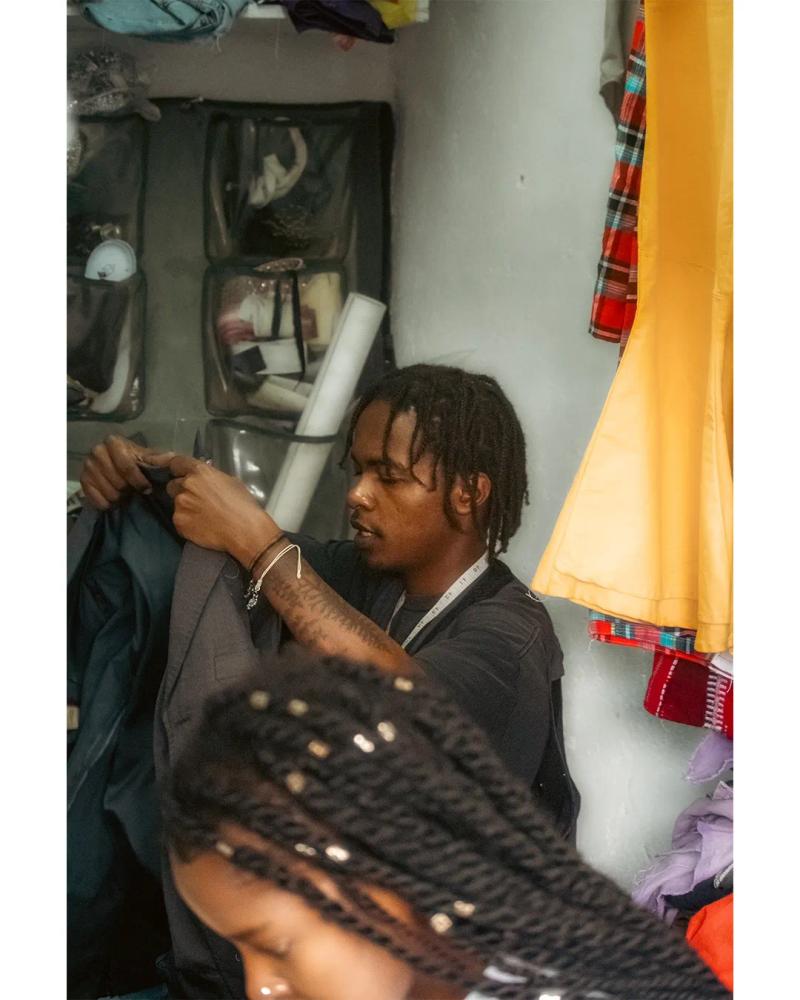
Vart: I like how this fashion space has been a very good place for young people to make income and experiment freely, and that matters to me more than watching big corporate brands with a lot of financial and clout based backing doing well.
All photos by Cormac Ajwang.